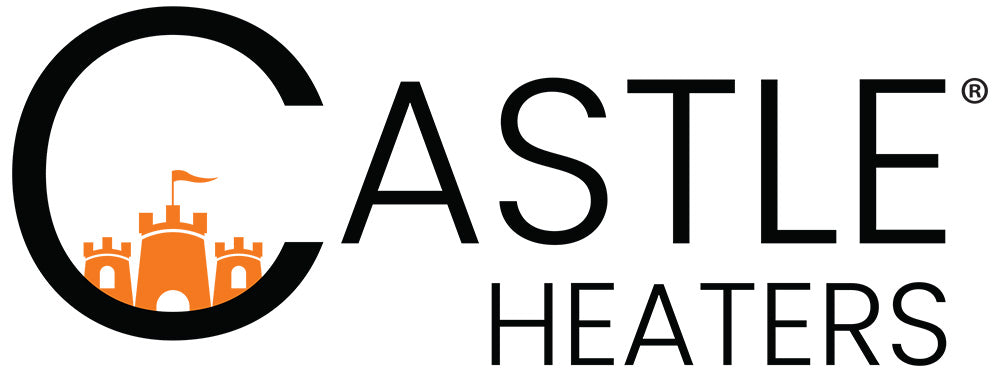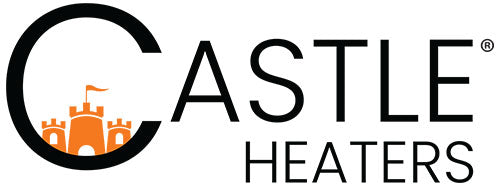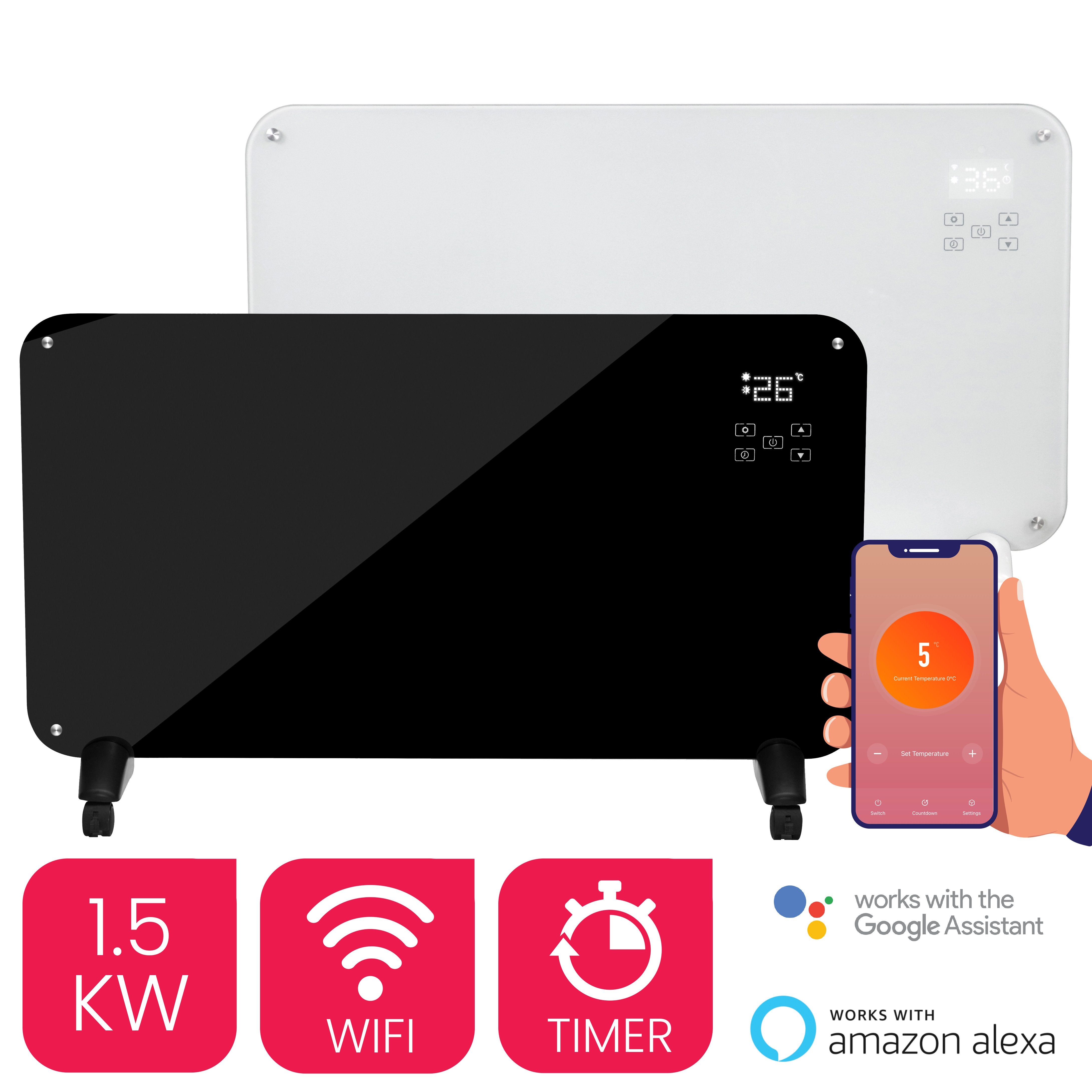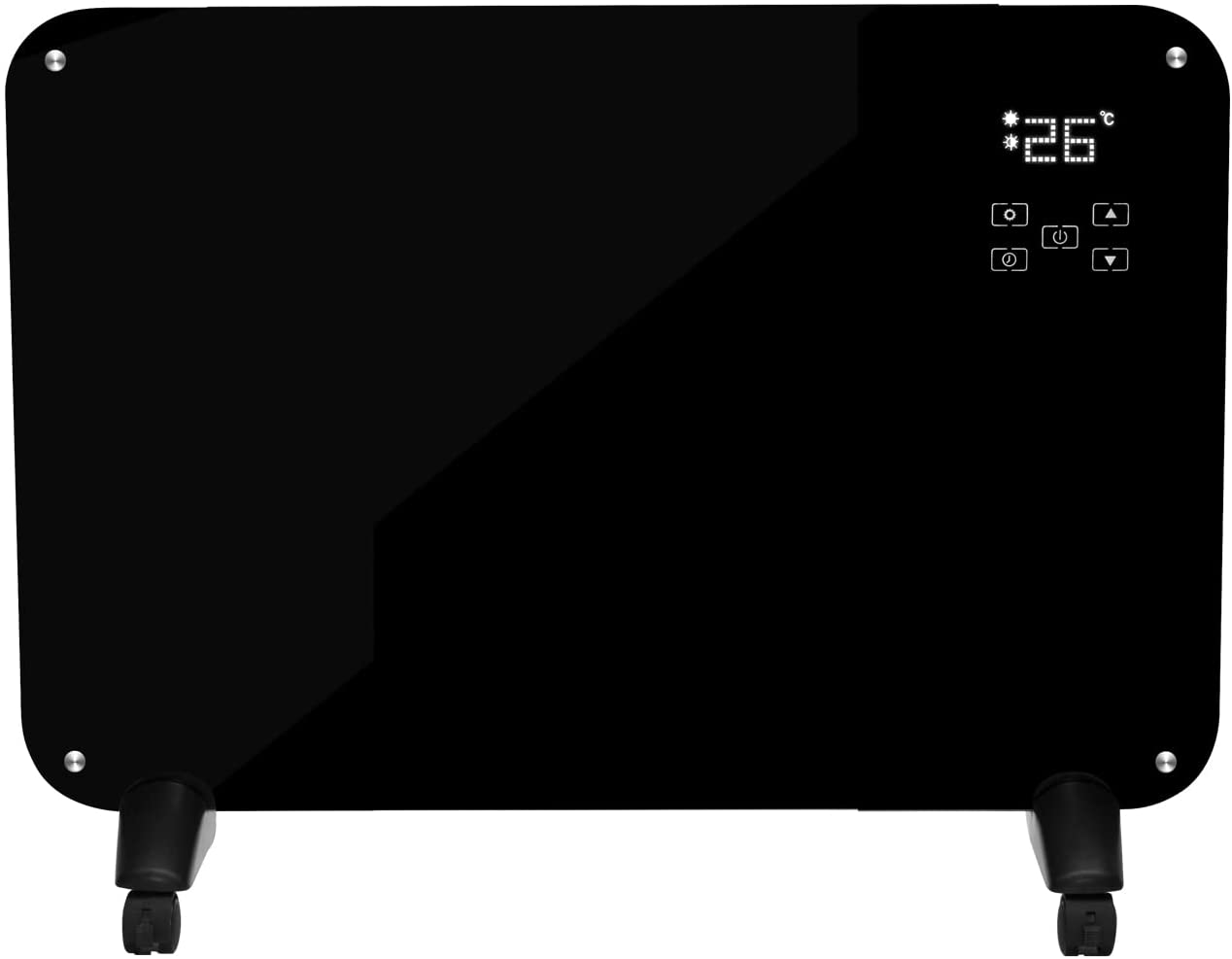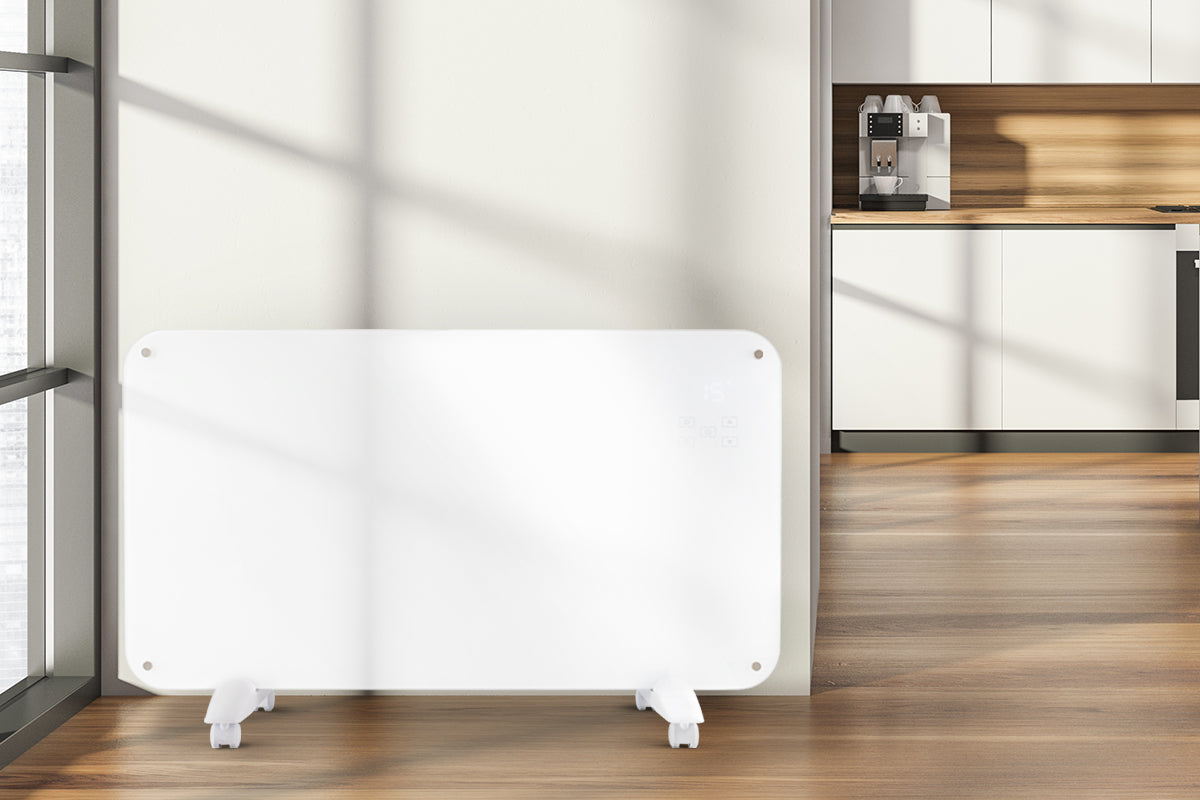Have you been wanting to purchase a heater but always wondered which one is for you? Now that winter is upon us, the time is now! Today’s blog answers all your heater related questions from “how do infrared heaters work?” to “how much electricity does an electric heater use?”.
How do infrared heaters work?
An infrared heater provides direct transfer of heat from the heater to the object without heating the air in between. Infrared is part of the electromagnetic spectrum and therefore, the feeling of warmth from an infrared heater is the same as the sun on your skin. With that said, you might be wondering “are infrared heaters safe?” The answer is yes, infrared heaters are 100% safe as it is a natural form of heat and should not be confused with UV light (the harmful light) emitted from the Sun. You can see how an infrared heater works in the picture below.

How do convection heaters work?
A convection heater offers a different form of heat to an infrared heater. You might be wondering “what is a convection heater?!” Well quite simply, the AIR inside a convector heater is warmed up by electrically heated wires and thus rises as warm air; creating a natural suction that makes cold room air flow into the device. This way of heating provides permanent circulation of warm air distributing evenly to reach all corners of the entire room, preventing cold spots in certain areas. Once the pre-set degree of heat has been reached, the device reduces its output while maintaining the desired temperature. You can see how this works in the picture below.

Electric Heaters
Both our infrared and convection heaters are electric; rated in Watts (W) or Kilowatts (KW). As a result, two frequently asked questions are “how much electricity does an electric heater use?” and “how much does an electric heater cost to run?”. As there are many variables to consider, such as what tariff you are on and what wattage your item is, there is no simple answer. What we can do however, is provide you with an example:
Step 1:
Find out the wattage of your item. This is usually printed on the box or the heater itself. For this example, let’s say your heater is 2KW.
Step 2:
The average Per Kilowatt hour in the UK is roughly 15p. So, if we multiply the KW with the average P/KWH you get the running cost. 2 x 0.15 = 0.30p per hour
Step 3:
Now you have the pence per hour, the total running costs will vary depending on how long your heater is on for. Let’s say your heater is on for 8 hours a day, the daily running costs would be 8 x 0.3 = £2.40.
The example above therefore answers “how much electricity does an electric heater use?” and “how much does an electric heater cost to run?” but please bear in mind this is based on certain conditions. When using the calculation for yourself please check with your electricity provider what tariff you are on for an actual hourly rate.
So, which one is best for me? And how many will I need?....
There are many factors to consider when buying a heater, so providing a definitive answer is difficult. We can however, give you several common variables to think about before purchasing one of our heaters:
-
Is the space you want to heat up indoors or outdoors?
This is the first question we would consider as overall; infrared heaters are more suited to the outdoors due to the way they work. As the heat they produce is absorbed by the object, it is not lost to the air around it.
-
How big is the space you want to heat up?
Assuming that the answer to the first question is indoors, this would be the second question we would consider. If you wanted to heat a large indoor space, for example a warehouse where people are stood working for long periods of the day, infrared heaters may be the best option. This is again due to the fact that they heat up an object as opposed to the air. Please bear in mind however, that infrared heaters heat up the objects directly in front of the unit so again in large spaces such as warehouses, multiple heaters would be needed for specific areas.
-
Is the room well insulated?
In a reasonable sized, well insulated room such as an office space or a bedroom, a convection heater works brilliantly. This is because a convection heater evenly distributes warm air and as a result, a long-lasting warm temperature remains. Usually, one convection heater works perfectly in a reasonable sized room however, for slightly larger rooms or rooms with high ceilings you may want to consider two.
We have created the table below to clearly summarise the positives and the considerations needed before purchasing our own Castle infrared and convection heaters.
|
INFRARED HEATER |
||
|
CATEGORY |
PROS |
CONSIDERATIONS |
|
HEAT RETENTION |
Heat is retained in the object for longer. |
Does not warm the air up around the heater – you have to be stood in line with the way it is facing to feel any impact. |
|
CONTROL |
The KMH-20/30R range allow you to change the temperature via remote control. |
You can only change the temperature and the timer setting. |
|
SPEED |
When turned on, the infrared heater warms objects up rapidly. |
Once it is on, it is on that setting; there is no gradual increase in temperature. |
|
COST |
Considered very cost effective when compared with gas heaters. |
Dependable on tariff and how many hours in the day it is used for. |
|
CONVECTION HEATER
|
||
|
CATEGORY |
PROS |
CONSIDERATION |
|
HEAT RETENTION |
Convection heaters warm the air in any rooms and therefore, in a well-insulated area, warm air can be trapped for a long period of time |
Not the most effective in any room or space that is draughty or near the outdoors as warm air can be lost quickly. |
|
CONTROL |
Our very own convection heaters are state of the art, giving you access to control your heating back at home from anywhere through Wi-Fi. With all sorts of possibilities, your home will never go cold again. |
The heater has to be left on standby for the Wi-Fi function to be enabled. |
|
SPEED |
In a well-insulated room, our most powerful convection heater (the NR20) only needs 15 to 20 minutes to make a considerable difference. |
For slightly bigger rooms, you will have to allow more time or consider purchasing 2 convection heaters. |
|
COST |
Considered very cost effective when compared with gas fires, and other fossil fuels. |
Very dependable on tariff and how many hours in the day it is used for. |
